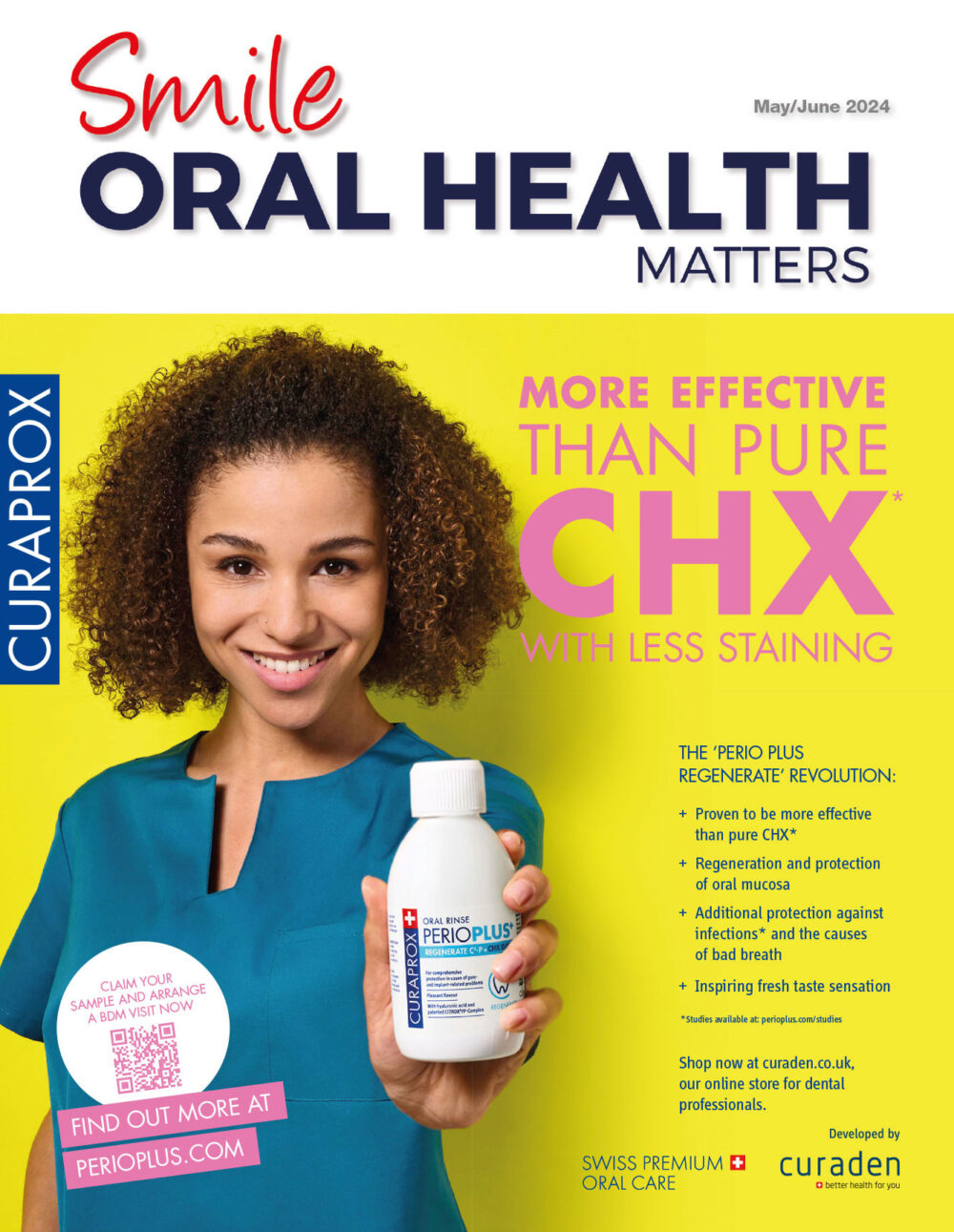Ergonomics is the application of design “to optimise human well-being and overall system performance”.[i]Dentists are at a particularly high risk of suffering from musculoskeletal disorders (MSD),[ii] and ergonomics is the discipline of problem-solving factors that heighten cognitive and physical stress. Good design improves productivity and prevents occupational diseases related to the practice of dentistry. Ultimately, ergonomic design results in greater comfort for both the professional and the patient.[iii]
Clinicians are over 50% more likely than the general population to experience debilitating neck pain, and nearly 40% more likely to suffer from lower back pain.[iv] In a recent survey, female dental professionals reported a higher MSD prevalence than their male counterparts, regarding all body regions surveyed.[v]Occupational health hazards among dental professionals have a significant negative overall impact on daily life.[vi] Proper ergonomic design is necessary to prevent injuries which can develop over time and can lead to long term disability.[vii]
Dental professionals can be more prone to forward-head postures when they examine patients. In this posture, the vertebrae no longer support the spine in an optimal fashion, leading to a pain pattern, often referred to as ‘tension neck syndrome’. This syndrome can also cause headaches and chronic neck, shoulder and inter-scapular pain, sometimes radiating into the arms.[viii]
Repetitive motion hand disorders are a risk factor for dental professionals due to the ‘pinch’ action commonly employed by clinicians when using dental tools; chiefly when employed in forceful action or extended use of heavy or vibrating instruments. This is exacerbated when the wrist is deviated from neutral posture into an abnormal or awkward position. Other common contributing factors include working for long periods without resting or alternating hands. Mechanical damage to hands can be sustained by grasping sharp-edged instrument handles.[ix]
Some common hand and wrist conditions experienced by dental professionals are debilitating muscle cramping, carpal tunnel syndrome (CTS), tendonitis/tenosynovitis, trigger finger, DeQuervain’s disease, hand-arm vibration syndrome (HAVS) and Guyon canal syndrome.[x]
To obtain the optimal view of a patient’s teeth, or to manoeuvre complex and heavy equipment, some clinicians may employ awkward poses that place a great deal of stress on the body. Lifting, lowering or handling objects with a bent or twisted back puts a great deal of pressure on spinal disks. An ergonomic workspace, awareness training – and where needed, physiotherapy – is of great importance to ensure professionals are able to adjust their postures for more sustainable working.[xi]
Psychosocial factors
There is a strong relationship between psychological stress and musculoskeletal disorders. Not only can chronic pain lead to mental ill-health, studies have found that those with poor mental health also have an increased risk of MSD.[xii]
As well as advice to practice regular self-care, some researchers have espoused the use of micro-breaks to assist with some symptoms of stress on the mind and body. Just a few minutes of physical activities such as stretching and exercise can improve mental wellbeing and reduce fatigue. A quick check-in with friends is associated with increased energy-levels, and can result in a reduced sense of conflict between work and private life. Watching a short movie clip can increase recovery and improve performance.[xiii]
Improving performance with great design
 Taking breaks is very important, but considering the design of instruments, and the layout of your workspace is core to improving the ergonomic experience of work. When a serious health and safety incident takes place at work, a responsible person has a statutory obligation to report this to the Health and Safety Executive (HSE). The Reporting of Injuries, Diseases and Dangerous Occurrences Regulations 2013 (RIDDOR) include occupational diseases associated with repetitive strain, due to the severe impact these injuries can have on individuals’ lives. In extreme cases, ignoring human factor design guidelines could result in fines or legal action.[xiv] [xv]
Taking breaks is very important, but considering the design of instruments, and the layout of your workspace is core to improving the ergonomic experience of work. When a serious health and safety incident takes place at work, a responsible person has a statutory obligation to report this to the Health and Safety Executive (HSE). The Reporting of Injuries, Diseases and Dangerous Occurrences Regulations 2013 (RIDDOR) include occupational diseases associated with repetitive strain, due to the severe impact these injuries can have on individuals’ lives. In extreme cases, ignoring human factor design guidelines could result in fines or legal action.[xiv] [xv]
Practitioners should consider use of lighter-weight automatic instruments instead of manual hand instruments. Handpieces should be as light and well balanced as possible.[xvi] Clinicians are recommended to use low vibration instruments, with incorporated lights to improve visibility. Proper consultation-room lighting, ergonomically designed seating, and an organised and accessible workspace are also recommended.[xvii]
Advanced low weight design for comfort and efficiency makes W&H the choice for dental practices to meet ergonomic demands.  For example, the Synea Vision and Synea Fusion combine exceptional power and quality alongside design for optimal safety and comfort. Both handpieces share an easy system for changing burs, an excellent grip and very low vibration thanks to ceramic ball bearings and innovative gearing technology. They benefit from an exceptional field of illumination with LED+, optimum cooling for improved working, hygienic head system to prevent cross infection, smooth, monobloc design and are angled and designed with small heads for excellent access. Both offer uncompromising comfort alongside reliability and outstanding quality.
For example, the Synea Vision and Synea Fusion combine exceptional power and quality alongside design for optimal safety and comfort. Both handpieces share an easy system for changing burs, an excellent grip and very low vibration thanks to ceramic ball bearings and innovative gearing technology. They benefit from an exceptional field of illumination with LED+, optimum cooling for improved working, hygienic head system to prevent cross infection, smooth, monobloc design and are angled and designed with small heads for excellent access. Both offer uncompromising comfort alongside reliability and outstanding quality.
The aim of ergonomics in the dental profession is to create an environment that enables safe, efficient and healthy working. Considering ergonomics at work is not only covered by statutory guidelines, but creates the basis for a more sustainable career, and a healthier life.
To find out more visit www.wh.com/en_uk, call
01727 874990 or email office.uk@wh.com

[i] FDI World Dental Federation. ERGONOMICS AND POSTURE GUIDELINES FOR ORAL HEALTH PROFESSIONALS. Available at: https://www.fdiworlddental.org/sites/default/files/2021-04/FDI_HSDW_ergonomics_and_posture_guidelines_eng_2021.pdf Accessed April 2024.
[ii] Ohlendorf D, Naser A, Haas Y, Haenel J, Fraeulin L, Holzgreve F, Erbe C, Betz W, Wanke EM, Brueggmann D, et al. Prevalence of Musculoskeletal Disorders among Dentists and Dental Students in Germany. International Journal of Environmental Research and Public Health. 2020; 17(23):8740. https://doi.org/10.3390/ijerph17238740
[iii] Gupta A, Ankola AV, Hebbal M. Optimizing human factors in dentistry. Dent Res J (Isfahan). 2013 Mar;10(2):254-9. doi: 10.4103/1735-3327.113362. PMID: 23946745; PMCID: PMC3731969.
[iv] FDI World Dental Federation. ERGONOMICS AND POSTURE GUIDELINES FOR ORAL HEALTH PROFESSIONALS. Available at: https://www.fdiworlddental.org/sites/default/files/2021-04/FDI_HSDW_ergonomics_and_posture_guidelines_eng_2021.pdf Accessed April 2024.
[v] Ohlendorf D, Naser A, Haas Y, Haenel J, Fraeulin L, Holzgreve F, Erbe C, Betz W, Wanke EM, Brueggmann D, et al. Prevalence of Musculoskeletal Disorders among Dentists and Dental Students in Germany. International Journal of Environmental Research and Public Health. 2020; 17(23):8740. https://doi.org/10.3390/ijerph17238740
[vi] Gupta A, Ankola AV, Hebbal M. Optimizing human factors in dentistry. Dent Res J (Isfahan). 2013 Mar;10(2):254-9. doi: 10.4103/1735-3327.113362. PMID: 23946745; PMCID: PMC3731969.
[vii] Shah AF, Tangade P, Batra M, Kabasi S. ERGONOMICS IN DENTAL PRACTICE. International Journal of Dental and Health Sciences Review Article 2014 Volume 01, Issue 01 68-78
[viii] Shah AF, Tangade P, Batra M, Kabasi S. ERGONOMICS IN DENTAL PRACTICE. International Journal of Dental and Health Sciences Review Article 2014 Volume 01, Issue 01 68-78
[ix] Gupta A, Bhat M, Mohammed T, Bansal N, Gupta G. Ergonomics in dentistry. Int J Clin Pediatr Dent. 2014 Jan;7(1):30-4. doi: 10.5005/jp-journals-10005-1229. Epub 2014 Apr 26. PMID: 25206234; PMCID: PMC4144062.
[x] Gupta A, Bhat M, Mohammed T, Bansal N, Gupta G. Ergonomics in dentistry. Int J Clin Pediatr Dent. 2014 Jan;7(1):30-4. doi: 10.5005/jp-journals-10005-1229. Epub 2014 Apr 26. PMID: 25206234; PMCID: PMC4144062.
[xi] Gupta A, Bhat M, Mohammed T, Bansal N, Gupta G. Ergonomics in dentistry. Int J Clin Pediatr Dent. 2014 Jan;7(1):30-4. doi: 10.5005/jp-journals-10005-1229. Epub 2014 Apr 26. PMID: 25206234; PMCID: PMC4144062.
[xii] Ng, Y.M., Voo, P. & Maakip, I. Psychosocial factors, depression, and musculoskeletal disorders among teachers. BMC Public Health 19, 234 (2019). https://doi.org/10.1186/s12889-019-6553-3
[xiii] Albulescu P, Macsinga I, Rusu A, Sulea C, Bodnaru A, Tulbure BT. “Give me a break!” A systematic review and meta-analysis on the efficacy of micro-breaks for increasing well-being and performance. PLoS One. 2022 Aug 31;17(8):e0272460. doi: 10.1371/journal.pone.0272460. PMID: 36044424; PMCID: PMC9432722.
[xiv] Health and Safety Executive. Types of reportable incidents. Available at: https://www.hse.gov.uk/riddor/reportable-incidents.htm. Accessed April 2024.
[xv] Health and Safety Executive. Human factors: Design. Available at: https://www.hse.gov.uk/humanfactors/topics/design.htm Accessed April 2024
[xvi] Gupta A, Bhat M, Mohammed T, Bansal N, Gupta G. Ergonomics in dentistry. Int J Clin Pediatr Dent. 2014 Jan;7(1):30-4. doi: 10.5005/jp-journals-10005-1229. Epub 2014 Apr 26. PMID: 25206234; PMCID: PMC4144062.
[xvii] Gupta A, Ankola AV, Hebbal M. Optimizing human factors in dentistry. Dent Res J (Isfahan). 2013 Mar;10(2):254-9. doi: 10.4103/1735-3327.113362. PMID: 23946745; PMCID: PMC3731969.












